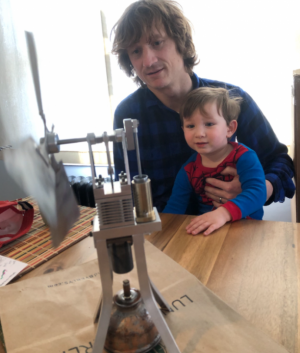-
Welcome back Guest! Did you know you can mentor other members here at H-M? If not, please check out our Relaunch of Hobby Machinist Mentoring Program!
You are using an out of date browser. It may not display this or other websites correctly.
You should upgrade or use an alternative browser.
You should upgrade or use an alternative browser.
Moriya stirling engine fan build
- Thread starter Technical Ted
- Start date
- Joined
- Nov 11, 2017
- Messages
- 77
I've been building one as well though I changed some of the features just because. Almost done. I just have the legs and piston yet to do. I agree, trepanning the displacer cap was exciting. That was a pretty deep, narrow cavity to cut.
Out of curiosity, what material did you use for the gaskets? I plan to use some material that looks like exhaust gasket material.
Out of curiosity, what material did you use for the gaskets? I plan to use some material that looks like exhaust gasket material.
- Joined
- Nov 5, 2016
- Messages
- 1,419
Awesome! What direction of rotation does your blade turn? When facing the front of the fan, does it turn clockwise or counter clockwise? From your video, it appears you are starting it by spinning it clockwise. If so, did you change the timing to do so. The power piston is 90 degree off from the displacer. Mine, built per the drawing, rotates counter clockwise....Technical Ted, thanks for the plans. Here is my version of the Moriya, it's almost silent. I haven't decided on what to do for the stand.
Nice job!
Ted
- Joined
- Nov 5, 2016
- Messages
- 1,419
I'm not sure what Kevin used, but I ordered gasket material from McMaster Carr and made the 3/16" thick gasket out of (3) 1/16" pieces. Works fine!I've been building one as well though I changed some of the features just because. Almost done. I just have the legs and piston yet to do. I agree, trepanning the displacer cap was exciting. That was a pretty deep, narrow cavity to cut.
Out of curiosity, what material did you use for the gaskets? I plan to use some material that looks like exhaust gasket material.
Edit: Sorry! Correction, I actually used some material I had on hand. I had it on my McMaster wish list, but found some I already had on hand.
Ted
Last edited:
- Joined
- Nov 5, 2016
- Messages
- 1,419
I agree, trepanning the displacer cap was exciting. That was a pretty deep, narrow cavity to cut.
I posted my build on another list and was asked for some details about the trepanning. I'm not sure if this list allows cross posting or not, so I'll repost here for those that might be interested in how I did mine:
=====================================================
Here are pictures of my tool and I put it back in the holder so you can see the setup. First, it's best to start off with a quality tool bit. You need to have everything as short and ridged as possible. Make sure there is clearance (the tool gets narrower towards the shank). This can be double checked when in the lathe using a test indicator as shown in one of the pictures. The tool needs adequate clearance on the sides as well. Doesn't take much on the inside of the recess, but takes quite a bit on the outside. The cutting edge goes right on center and it NEEDS to be the only thing on the cutting tool that touches the work piece. I marked the tool up multiple times with Dykem to check for rubbing... which would have lead to big problems. When I saw a section rub, I took the tool to the grinder to grind a little more off. I used lots of cutting oil and stopped to clear out chips frequently. I took my time and all turned out very well.
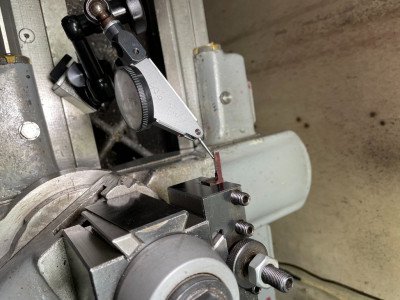
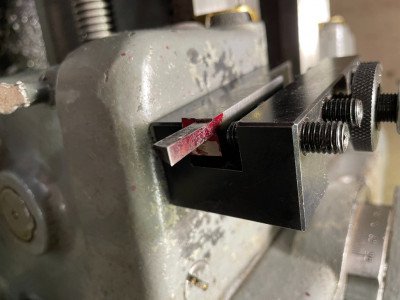
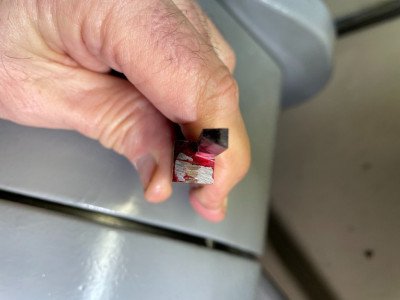
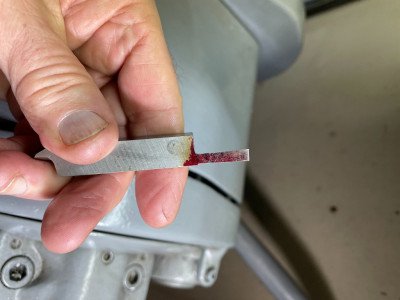
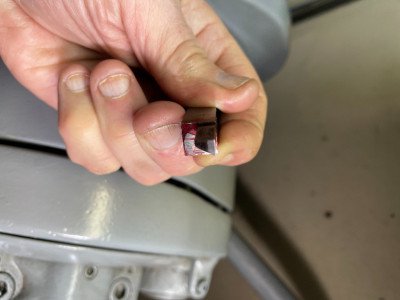
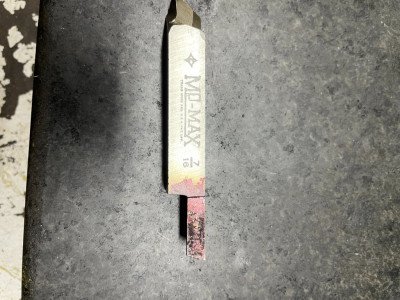
=====================================================
- Joined
- Aug 6, 2015
- Messages
- 3,902
I had the same question, hahahahahahaha... could not figure out where the heat source was coming from, hahahahaha too funny. Even more so since the first post it is clearly documented that the source is using a stove... man, I need to sharpen my reading skills, lolcan you please explain your source of heat?
- Joined
- Mar 31, 2015
- Messages
- 318
Clockwise. I bent the fan mount the wrong direction so I had to rotate the power piston crank to -90 degrees off the displacer to get it to blow forward. After drilling a hole in my had I wasn't thrilled to make another mount. I hate sheet metal.Awesome! What direction of rotation does your blade turn? When facing the front of the fan, does it turn clockwise or counter clockwise? From your video, it appears you are starting it by spinning it clockwise. If so, did you change the timing to do so. The power piston is 90 degree off from the displacer. Mine, built per the drawing, rotates counter clockwise....
Nice job!
Ted
The airflow over the cold end helps a lot, I used just a flywheel for the first testing and the cold end got pretty hot, therefore efficiency was not great.
Last edited:


